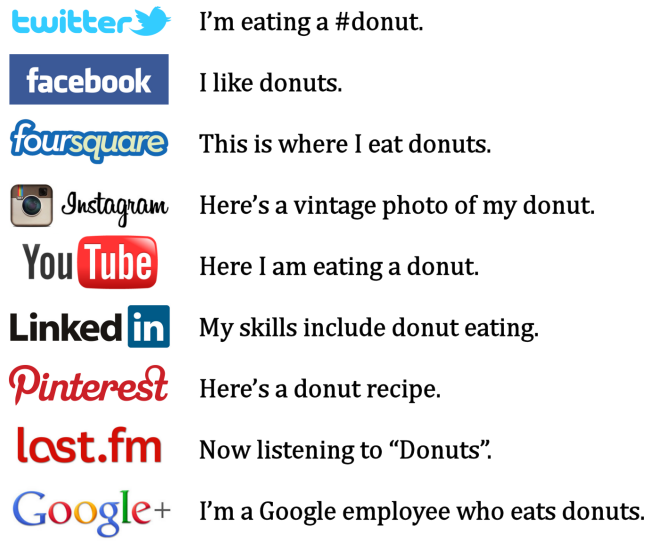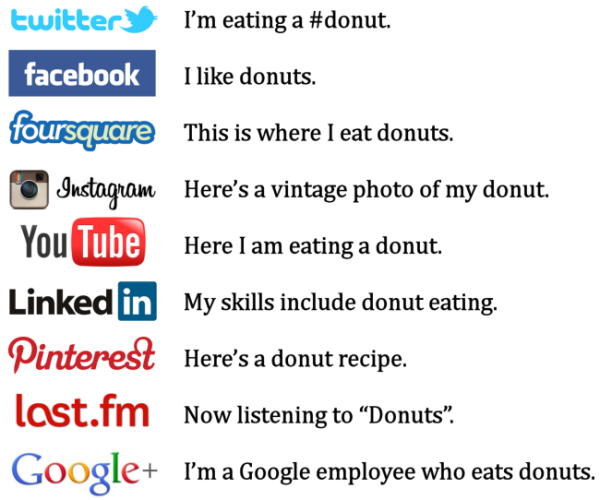
by MIMO Solutions | Internet Marketing, Social Media Explained, Social Networking
Here is everything you need to know about LinkedIn for small business:
LinkedIn is a a business networking platform. It should be used to keep up with and in touch with your top referral partners, strategic alliances, and trusted colleagues. LinkedIn is not really a social network, as much as a business network, so your updates should almost always be business related and professional sounding.
The advantages of using LinkedIn explained:
- LinkedIn easily shows you how to get introduced to someone you would like to do business with.
- LinkedIn allows you to create or join groups to encourage specific networking conversations.
- You can build your online resume and professional reputation through your profile.
- LinkedIn creates company pages for each organization and compiles information from everyone listed as an employee, so you can explore different levels of an organization.
- On you profile, the website links are great for search engine optimization and leads viewers to you home page.
- LinkedIn Jobs has become one of the top resource for finding a job or an employee.
- You can export your contacts in LinkedIn to your CRM, Outlook or email marketing software.
Getting started on LinkedIn explained:
- Sign in or create your account with your work email address. Remember, LinkedIn is for business so all of your contact information should be you work info not personal. People will be searching for you by your name, email, and phone number used at work.
- Make sure your LinkedIn profile is 100% complete. The set up tool is fairly simple and does a really good job of telling you what information is still missing and encouraging you to keep it up to date. Fill in as much as possible, and remember to use the same photo on all social networking sites. You want to create your personal brand. Never use a company logo for a personal profile image. People connect with people not corporate logos. They want to see your face to confirm it is the correct person and they will recognize you if you end up doing business in person.
- Choose your connections carefully. All of the social networking sites encourage you to add as many people as possible and make suggestions for people you might know as well. However, especially on LinkedIn, you need to be careful about who you associate with and who you recommend. Scientific studies have shown that you can only maintain about 150 personal relationships at a time. So while having 6,000 connections looks impressive, chances are that you are not really connected to any of them. Having around 150 real referral relationships with people you know, like and trust will be way more powerful in the long run. It should go without saying if you follow this philosophy but I will say it anyway:
DON’T ADD CONNECTIONS YOU DON’T KNOW IN REAL LIFE!
- Make and request recommendations carefully. People judge you based on the company you keep. You will want to only request recommendations from people who you know support you, and you will only want to recommend people who you would recommend to a client or friend. Again, LinkedIn becomes a visual representation of your professional business network to the entire world including future clients and referral partners. Protect it like you do your business. You have heard the old saying, “It’s not what you know, but who you know that counts.” Well now both of those things are available to future clients or employers, so treat LinkedIn recommendations like your social capital and spend it wisely.
- LinkedIn updates should be less frequent than other social networks. Twitter recently cancelled the auto-publishing agreement with LinkedIn, so now all your tweets do not automatically display on LinkedIn. I think this is actually a great move for LinkedIn. In a business networking setting, you don’t need to discuss what you had for lunch, or the sports hot topic of the day. You only need to share information related to your business. This does not mean “marketing messages” or “sales pitches,” the best information is stuff you would share at a Chamber of Commerce networking function in person. What is new in your industry? What are your frequently asked questions? What great article did you stumble across this week? What has changed in your profession? Did you hire a new person, release a new product, get a promotion, or speak to a professional organization? Share these types of things on LinkedIn, not your personal whims and musings.
- There are lots of sharing tools for LinkedIn. The one I like best is Hootsuite because it allows you to schedule your updates in advance. Chances are that the questions about spurred several ideas of stuff you can share on LinkedIn, but if you do it all right now, you will bombard your connections and not have anything to share tomorrow. Use a tool like Hootsuite to schedule 1 update per day for every day of the week or month, however far out you can think. You can always go in and cancel them or add more than one update if something comes up, but at least you will know that your profile isn’t dead and rotting over time. I like to use Monday mornings to get to work early and schedule my updates for the week when the important priorities are on my mind.
- Get involved in groups, but again choose carefully. Group logos are set to display on your profile but you can change this, as well as the number of updates you receive from the groups. Only join groups you are going to participate in. The number one mistake of social networking participants is that they over-extend their network. You can be a member of 100 groups, but if you never have time to check in, what good are the doing? Start slow and try couple groups for industry experts in your field and the local chamber of commerce. Try to respond to posts or create a topic and see how it goes. Remember, most people are overextended so don’t be surprised if no one comments at first. If the group is dead, delete it and try to find ones that stimulate you and your business.
- Update your profiles and trim your connections quarterly. Studies show that your world changes about every 90 days. New product or services are priorities, seasonal offerings come up, you have changed your marketing message, or are focusing on a different skill set. Also, people come in and out of our life constantly. Someone who you thought was going to be a great strategic alliance found a different vendor, retired, or stopped serving their customers like you would hope. Take a day once a quarter, I like the first day of a new quarter, to go into LinkedIn and clean things up. Bloated connections and outdated information make for bad networking. Trim some of those connections who you haven’t spoken with in 6 months, and keep your magic number around 150. It might seem odd now, but you will find that if you add new connections and delete people you know longer do business with your number will stay right at about 150.
 LinkedIn has a slowly become my favorite social network, and it just might be the same for you.
LinkedIn has a slowly become my favorite social network, and it just might be the same for you.
It is not flashy, it doesn’t have pictures or videos of cute kittens or guys getting hit in the junk, but what it does have just might transform your business networking. All of the Fortune 500 CEOs, and almost everyone you will meet in business has a LinkedIn profile. You can easily see how you are connected to any of them by visiting their page. Then it is up to you to manage your network and leverage your connections to meet and do business with who you want.
If you really want to get good at LinkedIn, I suggest taking a
business networking course like this one from
Sandler Training. If you can network offline, and apply those principles online, you will have great success.
LinkedIn has some great tools for helping you set up and complete your profile, but if you have any questions, just email me and I will be happy to help.

by MIMO Solutions | Internet Marketing, Social Media Explained, Social Networking

I love the “Social Media Explained” meme on the Internet.
Oops, there is nerd-term #1. A “meme” is an ongoing “inside joke” on the Internet. Google “social media explained” in Google images and you will see dozens of versions of the image above. Pardon the pun. People have done this graphic with running, and tons of other substitutes for “donuts.” So a “meme” is a running joke where people do their take on a popular Internet topic. See also “Call me, maybe” or look up any popular YouTube video and you will see hundreds of people with their own versions or spoofs.
 Now back to explaining Google Plus!
Now back to explaining Google Plus!
Here is pretty much everything you need to know about Google+ for business. If you want to have fun and experiment with other things in your free time, go for it!
These are the basics and necessities for companies or professional individuals on Google Plus.
Google+ or “Google Plus”
 I am starting with Google Plus because it now includes Google Places’ local maps and it has been incorporated into Google’s search results with the +1 button. You HAVE TO at least create a personal account and your Local page for your business and make sure they are complete. If you want any traffic or referrals from Google, you just have to figure out how to make Google+ work for you.
I am starting with Google Plus because it now includes Google Places’ local maps and it has been incorporated into Google’s search results with the +1 button. You HAVE TO at least create a personal account and your Local page for your business and make sure they are complete. If you want any traffic or referrals from Google, you just have to figure out how to make Google+ work for you.
Google has also recently added Events to Google+ so you may be able to use this to invite and schedule some cool things. Hangouts are also a feature included that lets you create or join your own chatroom. You can get a group of people online and all “hang out” together much like a video conference or old school “chat room”.
Here is Google Plus explained:
- Google+ is cool because you can add people to “circles” and you don’t have to add people back who add you. This allows you to keep some privacy and separate the groups of people in your life and business.
- Google’s +1 button is basically similar to the “like” button on Facebook. A +1 means you like or are adding your vote of +1 to the topic or website. The more votes you get, the higher the search rankings and the more people see your post.
- Creating your profile and a local page for your business are pretty simple. Google will guide you through the process and even auto-fill some stuff if you have an account there already. Make sure you claim your local business page, because if you are in the phone book, chances are there is already a listing for you.
- Follow the instructions to add your page badge to your website. This helps Google link your account and website together and verify official pages for you business. Also, on you profile pages be sure to include links in the websites or contributor categories for all your social media accounts and websites. This helps Google link all your stuff together and it will improve the search results for your business.
- Finally, start adding people to you circles. The cool thing about circles is that you can pretty much add anyone and as many as you want without getting overwhelmed or over-sharing your privacy, because you can sort them. I recommend 4-5 circles: Family and Friends, Customers, Leads, Acquaintances, and referral partners or team members. That way you can share baby pictures or party pics with friends or family and inside information with team members without sharing it with the world. Just know that “public posts” go to everyone.
- There are no sharing tools or linked accounts with Google Plus yet, so you are going to have to log in and post here separately and update your account on at least a weekly basis.
You can visit the help section or email me with any questions while getting started.
There are not a lot of people officially on Google Plus yet, but the number is growing very fast because so many people have Google accounts for Gmail, YouTube, and their other services. The good news is you get to be on the cutting edge for awhile, and there are plenty of good account names available. Which is a plus for Google.
Stay tuned, over then next few weeks I plan to explain the other social media sites!

by MIMO Solutions | communication skills, marketing, sales, social media, social media marketing, Social Networking
 |
| How do you put together the pieces of a great social networking campaign? |
I was teaching a sales class about how to use social media the other day and this question was posed to me. I thought it was very interesting and something I have been struggling with for awhile. I am going to share my thoughts here, but I would love some feedback in the comments. Do you think businesses should be training salespeople to use social media or social media people and marketers how to sell?
Is it easier to train sales people to use social media or to train social media people to sell?
I have dealt with this from the sales side a lot as a
Sandler Sales Trainer. Everyone wants to know if it is actually something you can learn, or it is something you naturally have. I have also taught introductory computer classes for the elderly and out of work. I can absolutely say without a shadow of a doubt in my mind that you can train people to be better at sales, and you can train people to be better at computers and social media. I have done it for thousands of people.
However, that doesn’t really answer the question of which is better or easier… Really, it is a fundamental question of human behavior. There are generally four things that people are good at: working with the big picture and making decisions, working with people and influencing them, working steadily and keeping the peace, and working with details, systems and compliance. This is know and the DISC behavioral model if you want to learn more.
 |
| DISC Behavioral Styles |
Here is what you need to know for sales vs. social media:
People who are naturally gifted at sales are called “Influencers“. They are good at things related to social situations and communications. They are extroverts and people-oriented.
People who are naturally gifted and computers are called “Compliants“. The are good at things related to structure and organization. They are introverts and task-oriented.
These two types of people are exact opposites. Most people have some combination of all four types because all of those things are necessary to survive as a human being. However, Influencers and Compliants are on the opposite sides of the spectrum, so it is rare to find someone who will be high in both of these categories.
So which type of person makes the best and easiest social networker on the Internet?
The answer is training one person in the opposite task from their natural strength will be equally painful for both.
If you try to get an Influencer to sit behind a computer by themselves and focus on a task, they will be very stressed. If you try to get a Compliant to go out to a business networking function and deal with people, they will be very stressed. However, this doesn’t mean that you have to give up.
So who do you put in charge of social networking?
You can find the rare person who can do both well. Since there are millions of companies and some are existing entirely of 1 person, there is a good chance you can’t find yourself an I-C combo who happens to be an expert in Internet marketing and your business.
You can team up an Influencer with a Compliant and teach them the value of the other persons strengths. Salespeople generally know that they hate details and paperwork, and would much rather have someone else do it, and IT people generally realize they are not good at dealing with people’s irrational behavior and that they dislike trying to build relationships or popular. So as long as you explain why they need to team up and help them build a strong working relationship even though they are different, you can get the best of both worlds without stretching either outside there comfort zone.
If it is only you or you are currently in charge of social media and you are not an I-C or either, then you are going to be stressed, but you are not out of options. You can always outsource the creative or production to someone that has what you are lacking, or you can just realize that this task is going to be uncomfortable but you have to do it. There is a funny thing about human beings that we hate to do things that are uncomfortable, but the more we do the less uncomfortable the become. If you are not good at computers but you force yourself to learn, eventually they become easier deal with and you gain an appreciation for what they bring to the table.
Conclusion
Social networking takes an interesting balance of skills. You need a minimum level of skill at relationship building and computers and social media. If you are lacking in one area or the other, it is probably because it goes against your behavior style. You can except this and sure up your weakness or you can pass it off to a team member that is naturally more gifted than you. I generally recommend the latter.

by MIMO Solutions | communication skills, sales, social media, Social Networking, tips
Many small businesses spend so much time and effort focusing on the front end of the marketing funnel that they neglect one of the most important components of the marketing process. What happens to a lead once they express interest in your business? For most small businesses, one of the most costly aspects of the marketing equation is how your staff handle the leads that come to you – whether by phone, email, fax, or in person. You’re investing a lot in generating leads, and every lead counts! That’s why training all your staff on how to properly answer the phone, respond to a customer request, and handle leads is so critical. – Tiffany Monhollon

Sales people are not the devil. Sales is not a four-letter word.
Sales are what keeps your business or organization alive. Tiffany was exactly right, but did you notice how she didn’t use the word sales even one time…
Really, it is OK. If it makes you feel better, you can call it conversion, engagement, lead handling, customer service, account management, or any of the other dozens of made up titles for sales. I don’t care as long as you realize that it is a critical part of the process. So many Internet marketers forget that sales people are a good thing!
Nobody is any company, any where, at any time, has ever made any money, until someone sold something.
I call this process Social Media Sales. It is the process converting leads generated through social media and internet marketing into actual revenue dollars for your organization. It usually goes something like this:
- Develop the personal relationship
- Identify customer needs
- Qualify customer for budget and resources
- Assist in the decision making process
- Present custom solutions not offered on the Internet
- Assist in the delivery of the product or service
- Resolve issues or concerns throughout the entire process
- Ask for referrals and testimonials
As you can see there are a lot of things that the marketing and website team are typically not equipped to deal with. A trained staff of professional salespeople can help you take the prospects from click to close, and increase your online conversions dramatically.
A lot of people are having a hard time defining a Return On Investment for internet marketing and social media, and it’s because they have left out the sales department. If your activities all eventually lead to dollars sold, then a return is right in the bottom line. Did you sell more than you spent?

by MIMO Solutions | Internet Marketing, Social Networking
Check out Sales vs. Marketing and let me know what you think: http://www.fromclicktoclose.com/p/sales-vs-marketing.html
I hate it when people mix these two up, and I would love to have some feed back on how to make it more clear for everyone…
Thanks!

by MIMO Solutions | communication skills, sales, social media, Social Networking
The art of sales is about communication. Those who can communicate the most effectively will be the most successful.
Those skills that help you to be a good salesperson – most sales training students have discovered that they become better managers, friends, parents and spouses as well. Listening, questioning, and helping people discover what is in their own best interests are valuable skills in life and social media.
If you like most people who never want to be considered a salesperson, and you certainly don’t want to be trained to act like one, READ THIS STORY:
I recently received the following testimonial from a student and want to share it with you. This is verbatim from a real client. Those of you who have received sales training through Sandler Training will recognize the questioning process:
“I am writing to inform you of an event that happened yesterday that speaks volumes of the curriculum that you teach. Standing in the upper level of one of my job sites I received a startling message. To begin with I am a true single father of two beautiful children whose mother abandoned them about a year ago; with that said here is what transpired.The startling message was from my children’s mother saying she was going to end her life. This message, of course, was returned by a phone call from me. She answered in tears stating that she had lost her children, lost her lover and was done with life. My initial response without forethought was, ‘[name omitted], what do you mean, tell me more, please.’ She responded saying her life was over. I then said, ‘Please tell me what you mean and how long has it been that you have been in this mindset.’She told me that ever since she had left me she had been addicted to prescription narcotics and in an abusive relationship. By this time I am in my vehicle racing to south Kansas City to her home. I asked her ‘since this realization’ what has she tried to do to get help or leave. She responded saying she had tried to stop using and tried to leave her lover many times. I told her clearly this has failed to work and she agreed. She then told me that this has cost her her family, children and life. With a lump in my throat I asked her what she was feeling coming to this realization.When I arrived at her house, I found a beaten woman who was in the process of ending her life. I pulled my wallet out and showed her a picture of my beautiful 6-year-old son and my amazing 13-year-old daughter and asked her, “Are you going to give up on them, and are you done fighting?’ She dropped what she had in her hands and allowed me to call for help. Less than 24 hours later, she was on a plane to Colorado to a treatment center for addiction and spiritual healing.The skills you teach in this program far surpass sales.You teach how to meet people where they are and to get the root of issues and pain. I thank you, I fully believe that without the skills you have instilled in me, I would not have had the clarity of getting through to her or a guideline to do so, and as a consequence, my children’s mother may have ended her life.”
No one can tell me they don’t sell. If you’ve ever applied for a job, asked someone on a date or raised teenagers, you’ve been in sales.
Sales skills are life skills. All of the attitudes, behaviors and techniques are directly applicable. It’s short-sighted to think they don’t relate to you. And those elements, when perfected, create better relationships. Isn’t that, after all, what we’re looking for?
Learn how to be successful in sales, and you learn how to be successful in life.





 Now back to explaining Google Plus!
Now back to explaining Google Plus! I am starting with
I am starting with 



